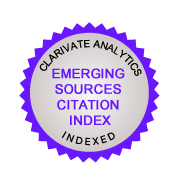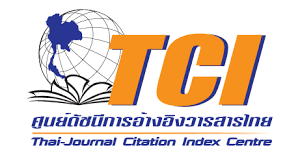Preparation and characterizations of highly filled graphene-polybenzoxazine composites
Keywords:
Highly Filled, Graphene, PolybenzoxazineAbstract
In recent years, graphene has been extensively utilized in electronic applications due to its superior electrical conductivity, high thermal conductivity and excellent mechanical properties [1, 2]. This research emphasized on the development of graphene (xGnP Grade H, XG Science, USA) filled composites based on polybenzoxazine particularly at high graphene loading (0-60wt%) [3, 4]. It was found that the density of the obtained composites was linearly increased with graphene content and the values were determined to be 1.185-1.637 g/cm3 which followed the rule of mixture suggesting negligible void in the composites samples. Mechanical and thermal properties of the graphene filled polybenzoxazine composites were examined by dynamic mechanical analysis (DMA) and differential scanning calorimetry (DSC). The curing temperature of the composites was observed to remarkably reduce from 233oC for the as-synthesized benzoxazine resin to 196oC at 60wt% of the graphene content suggesting curing acceleration with the presence of graphene. The storage modulus (E') at room temperature of the composites was considerably enhanced with the amount of the graphene i.e. from 5.9 GPa of the neat polybenzoxazine to about 25.1 GPa at 60wt% of graphene. The glass-transition temperatures (Tg) obtained from the maximum peak of loss modulus of the graphene-filled polybenzoxazine composites were observed to be in a range of 174oC to 188oC. The Tg values increased substantially with increasing graphene content implying good interfacial interaction between the graphene filler and the polybenzoxazine matrix. Other essential properties of these highly filled composites including gas permeability, electrical and thermal conductivity are also evaluated for potential use as a bipolar plates for proton exchange membrane fuel cells.
Downloads
References
Kuilla, T., Bhadra, S., Yao, D., Kim, N.H., Bose, S. and Lee, J.H. (2010). Recent advances in graphene based polymer composites. Prog. Polym. Sci. 35(11) : 1350-1375.
Kim, H., Abdala, A.A. and Macosko, C.W. (2010).Graphen/polymer nanocomposites. Macromolecules. 43(16) : 6515-6530.
Ishida, H. and Rimdusit, S. (1998). Very high thermal conductivity obtained by boron nitride -filled polybenzoxazine. Thermochim. Acta. 320(1-2) : 177-186.
Dueramae, I., Pengdam, A. and Rimdusit, S. (2013). Highly filled graphite polybenzoxazine composites for an application as bipolar plates in fuel cells. J. Appl. Polym. Sci. 130(6) : 3909-3918.
Cheng, T. (2010). Bipolar plates and plate materials in Proton exchange membrane fuel cells : materials properties and performance. USA. : CRC Press. 305-313.
Hernandez, M., Bernal, M.M., Verdejo, R., Ezquerra, T.A. and Lopez-Manchado, M.A. (2012).Overall performance of natural rubber/graphene nanocomposites. Compos. Sci. Technol. 73(23) : 40-46.
Guo, N. and Leu, M.C. (2012). Effect of different graphite materials on the electrical conductivity and flexural strength of bipolar plates fabricated using selective laser sintering. Int. J. Hydrogen Energy. 37(4) : 3558-3566.
Rimdusit, S., Jubsilp, C. and Tiptipakorn, S. (2013). Alloys and Composites of Polybenzoxazines. Singapore : Springer.
Ishida, H. (1996). Process for preparation of benzoxazine compounds in solventless systems. U.S. Pat. No. 5,543,516.
Downloads
Published
How to Cite
Issue
Section
License
Copyright (c) 2014 Journal of Metals, Materials and Minerals

This work is licensed under a Creative Commons Attribution-NonCommercial-NoDerivatives 4.0 International License.
Authors who publish in this journal agree to the following terms:
- Authors retain copyright and grant the journal right of first publication with the work simultaneously licensed under a Creative Commons Attribution License that allows others to share the work with an acknowledgment of the work's authorship and initial publication in this journal.
- Authors are able to enter into separate, additional contractual arrangements for the non-exclusive distribution of the journal's published version of the work (e.g., post it to an institutional repository or publish it in a book), with an acknowledgment of its initial publication in this journal.








